
It's Monk's Time is the sixth album Thelonious Monk released in 1964 for Columbia Records, featuring three original compositions as well as three jazz standards.

Rollins Plays for Bird is a 1957 album by jazz saxophonist Sonny Rollins, recorded for the Prestige label, featuring performances by Rollins with Kenny Dorham, Wade Legge, George Morrow and Max Roach on material associated with Charlie Parker.

Soul People is an album by American saxophonists Sonny Stitt and Booker Ervin, and organist Don Patterson. Just like his previous Soul Shack, Soul People features heavily blues-drenched jazz. The original album was recorded in 1964 and issued by Prestige in early 1965. In 1993, it was reissued on CD by Prestige, featuring three additional tracks.

Dig Him! is an album by saxophonists Gene Ammons and Sonny Stitt recorded in 1961 and originally released on the Argo label in 1962. The album was subsequently rereleased as We'll Be Together Again on the Prestige label in 1968.

You Talk That Talk! is an album by saxophonists Gene Ammons and Sonny Stitt recorded in 1971 and released on the Prestige label.
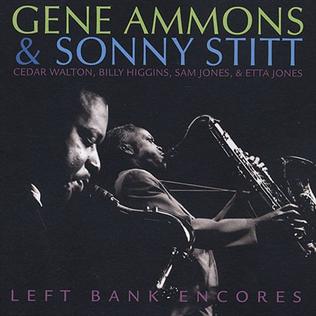
Left Bank Encores is a live album by saxophonists Sonny Stitt and Gene Ammons recorded in Baltimore in 1973 and released on the Prestige label in 2002. The album was recorded at the same concert that produced God Bless Jug and Sonny.

Together Again for the Last Time is an album by saxophonists Sonny Stitt and Gene Ammons recorded in 1973 and released on the Prestige label in 1976. The album was the final recording by the pair, who had a long history of collaboration, prior to the death of Ammons in 1974.

Kaleidoscope is an album by saxophonist Sonny Stitt compiling tracks recorded in 1950-52 and released on the Prestige label in 1957. The 1991 CD reissue added four bonus tracks to the original LP.
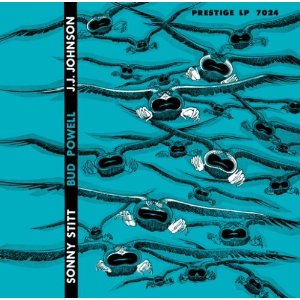
Sonny Stitt/Bud Powell/J. J. Johnson is an album by saxophonist Sonny Stitt compiling tracks recorded with trombonist J. J. Johnson or pianist Bud Powell in 1949-50 and released on the Prestige label in 1957. The 1990 CD reissue added five bonus tracks to the original LP. The cover art was done by cartoonist Don Martin of MAD magazine fame.
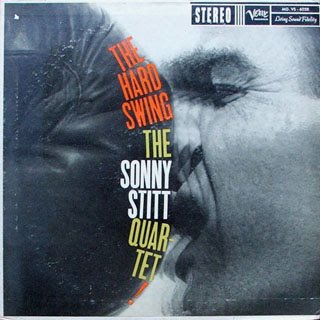
The Hard Swing is an album by saxophonist Sonny Stitt's Quartet recorded in 1959 and released on the Verve label.
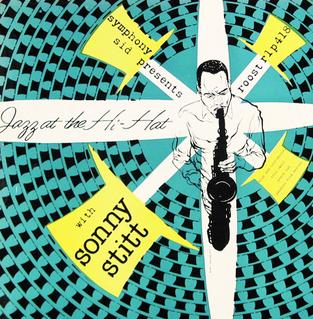
Jazz at the Hi-Hat is a live album by saxophonist Sonny Stitt and Eddie Davis recorded in Boston in 1954 and originally released on the Roost label as a four track 10 inch LP. The original album has been expanded with additional material and released on CD in two volumes.

Sonny Stitt Plays Arrangements from the Pen of Quincy Jones is an album by saxophonist Sonny Stitt recorded in 1955 and originally released on the Roost label.

Sonny Stitt Plays is an album by saxophonist Sonny Stitt recorded in 1955 and originally released on the Roost label.

Stittsville is an album by saxophonist Sonny Stitt recorded in 1960 and originally released on the Roost label.

Soul Electricity! is an album by saxophonist Sonny Stitt recorded in 1968 and released on the Prestige label. The album features Stitt using the varitone, an electronic amplification device which altered the saxophone's sound.

Night Letter is an album by saxophonist Sonny Stitt recorded in 1969 and released on the Prestige label. The album features Stitt using the varitone, an electronic amplification device which altered the saxophone's sound.
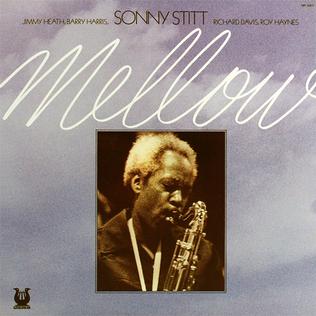
Mellow is an album by saxophonist Sonny Stitt recorded in 1975 and released on the Muse label.

Shangr-La is an album by saxophonist Sonny Stitt featuring organist Don Patterson recorded in 1964 and released on the Prestige label.
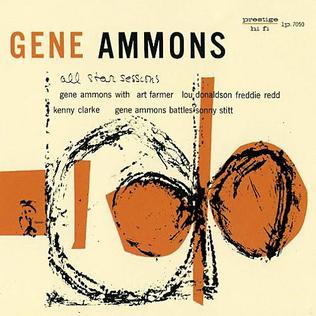
All Star Sessions is an album by saxophonist Gene Ammons recorded between 1950 and 1955 and released on the Prestige label.
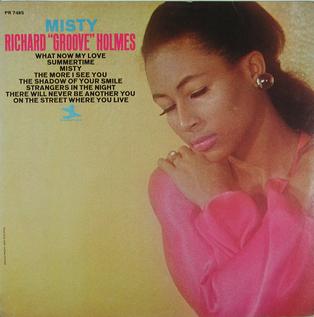
Misty is an album by jazz organist Richard "Groove" Holmes which was recorded in 1966, with one track from 1965, and released on the Prestige label.
























